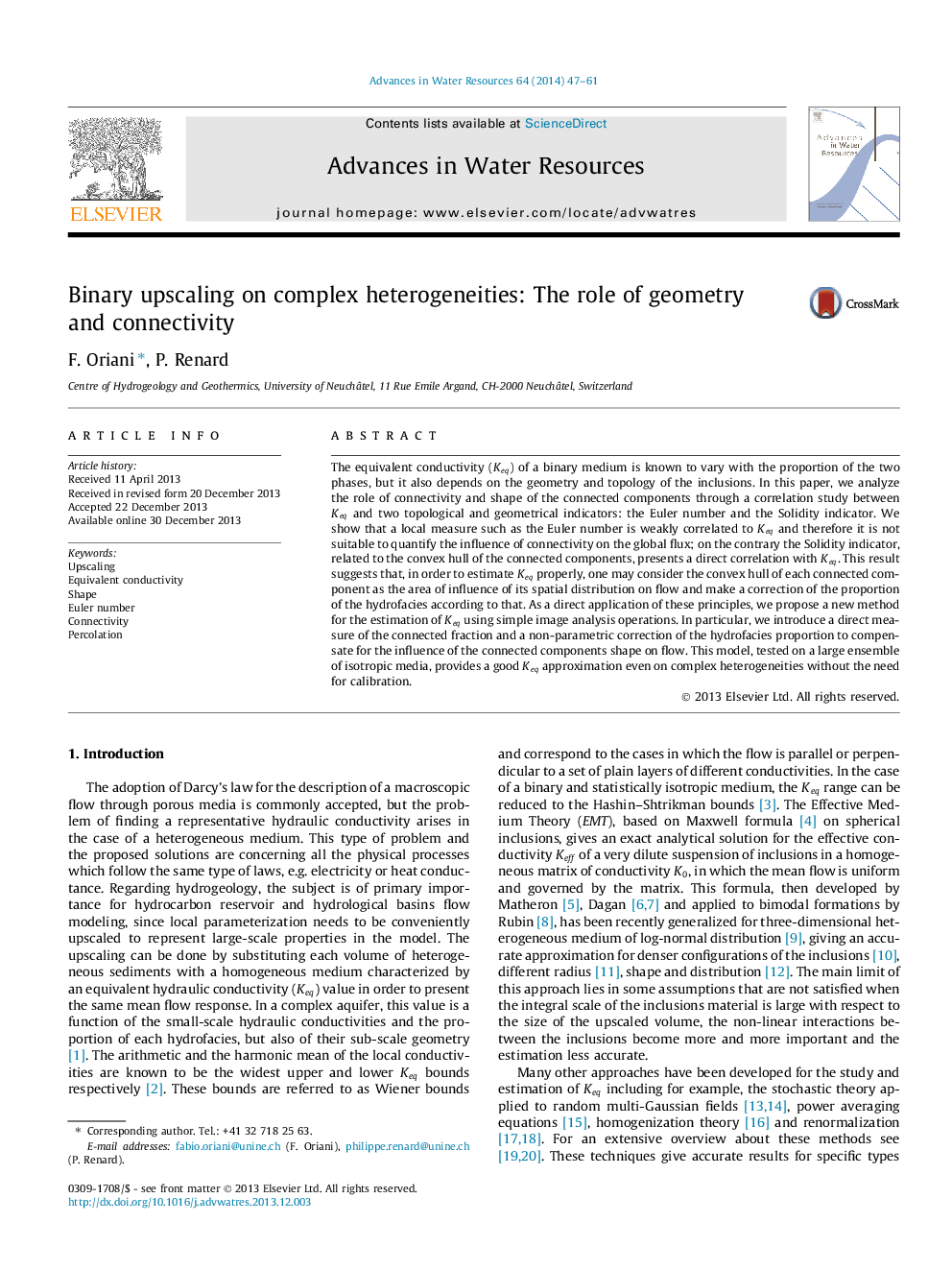| Article ID | Journal | Published Year | Pages | File Type |
|---|---|---|---|---|
| 4525607 | Advances in Water Resources | 2014 | 15 Pages |
•The impact of topology and geometry on the equivalent conductivity is investigated.•The Euler number is not a good measure of connectivity of a binary medium.•The area of influence on flow of each inclusion is related to its convex hull.•A new algorithm for the estimation of the equivalent conductivity is proposed.•The new algorithm gives accurate estimations on isotropic complex heterogeneities.
The equivalent conductivity (KeqKeq) of a binary medium is known to vary with the proportion of the two phases, but it also depends on the geometry and topology of the inclusions. In this paper, we analyze the role of connectivity and shape of the connected components through a correlation study between KeqKeq and two topological and geometrical indicators: the Euler number and the Solidity indicator. We show that a local measure such as the Euler number is weakly correlated to KeqKeq and therefore it is not suitable to quantify the influence of connectivity on the global flux; on the contrary the Solidity indicator, related to the convex hull of the connected components, presents a direct correlation with KeqKeq. This result suggests that, in order to estimate KeqKeq properly, one may consider the convex hull of each connected component as the area of influence of its spatial distribution on flow and make a correction of the proportion of the hydrofacies according to that. As a direct application of these principles, we propose a new method for the estimation of KeqKeq using simple image analysis operations. In particular, we introduce a direct measure of the connected fraction and a non-parametric correction of the hydrofacies proportion to compensate for the influence of the connected components shape on flow. This model, tested on a large ensemble of isotropic media, provides a good KeqKeq approximation even on complex heterogeneities without the need for calibration.
